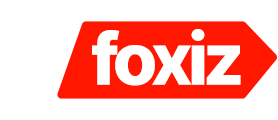When it comes to planning for retirement, a 401k is a financial tool that you’ll often hear about.
It’s a retirement savings account that provides significant tax advantages and is widely used by millions of Americans to build a nest egg for their golden years.
In this article, we will discuss the details of what a 401k is, how to contribute to it, and how much you should consider contributing.

What Is a 401k?
A 401(k) is a tax-advantaged retirement savings plan offered by many employers in the United States.
It’s named after a section of the Internal Revenue Code (Section 401(k)) that governs these types of accounts. The key features of a 401(k) include:
Employee Contributions:
Employees can contribute a portion of their pre-tax income to their 401(k) account.
These contributions are deducted automatically from their paychecks, making saving for retirement easy and convenient.
Employer Contributions:
Many employers offer matching contributions to encourage their employees to save for retirement.
This means that the employer contributes a certain amount to the employee’s 401(k) based on the employee’s contributions, typically up to a specified percentage of their salary.
Tax Benefits in 401K:
Contributions made to a traditional 401(k) are tax-deferred, meaning they are not subject to income tax in the year they are made.
Instead, taxes are deferred until you withdraw the money in retirement.
Roth 401(k) contributions, on the other hand, are made with after-tax dollars, but qualified withdrawals in retirement are tax-free.
Investment Options:
401(k) accounts offer a range of investment options, typically including a selection of mutual funds, exchange-traded funds (ETFs), and sometimes individual stocks and bonds.
This allows account holders to build a diversified portfolio aligned with their risk tolerance and retirement goals.
Withdrawal Restrictions:
Generally, you cannot withdraw funds from a 401(k) before the age of 59½ without incurring penalties, with some exceptions such as hardship withdrawals or loans.
How to Contribute to a 401k
Contributing to a 401(k) is relatively straightforward, as it is facilitated through your employer. Here’s how to do it:
1. Enrollment:
When you start a new job or become eligible for your employer’s 401(k) plan, you will typically receive information about the plan and instructions on how to enrol.
2. Select Contribution Amount:
Decide how much of your pre-tax income you want to contribute to your 401(k) account. This can usually be adjusted at any time, allowing you to increase or decrease your contributions as needed.
3. Choose Investment Options:
Review the investment options offered by your 401(k) plan and select the ones that align with your financial goals and risk tolerance.
4. Set Up Automatic Contributions:
Your contributions will be deducted from your paycheck automatically, making saving for retirement a seamless process.
5. Consider Employer Match:
If your employer offers a matching contribution, strive to contribute enough to take full advantage of this benefit. It’s essentially free money for your retirement savings.
6. Monitor and Adjust:
Periodically review your 401(k) contributions and investment choices to ensure they align with your financial goals. As your circumstances change, you may need to make adjustments.
How Much Should You Contribute to a 401k?
Determining how much to contribute to your 401(k) depends on various factors, including your financial situation, retirement goals, and other financial priorities. Here are some guidelines to consider:
1. Take Full Advantage of Matching Contributions:
If your employer offers a matching contribution, aim to contribute at least enough to receive the full match. This is essentially an immediate return on your investment.
2. Consider Your Retirement Goals:
Calculate how much you need to save for retirement based on your desired retirement age, lifestyle, and expected expenses. Online retirement calculators can help with this.
3. Budget Wisely:
Ensure that your 401(k) contributions fit comfortably within your budget. While it’s beneficial to save as much as possible, it shouldn’t come at the expense of your current financial well-being.
4. Incremental Increases:
As your income grows or as you pay off debts, consider increasing your 401(k) contributions. Many employers allow you to set up automatic annual increases.
5. Tax Considerations:
Keep in mind the tax implications of your contributions. Traditional 401(k) contributions lower your taxable income for the year, potentially reducing your tax bill. Roth 401(k) contributions don’t offer an immediate tax benefit but can provide tax-free withdrawals in retirement.
6. Diversify Your Savings:
Don’t rely solely on your 401(k) for retirement savings. Consider other investment accounts, such as IRAs or taxable brokerage accounts, to diversify your savings and optimize your tax strategy.
Always remember A 401k is a valuable tool for building a secure retirement future. It offers tax advantages, employer contributions, and a range of investment options.
When contributing to a 401(k), it’s essential to strike a balance between saving for the future and meeting your current financial needs.
By contributing consistently, taking advantage of employer matches, and adjusting your contributions as your financial situation evolves, you can work toward a financially secure retirement.
Consider consulting a financial advisor to develop a personalized retirement savings strategy tailored to your goals and circumstances.




